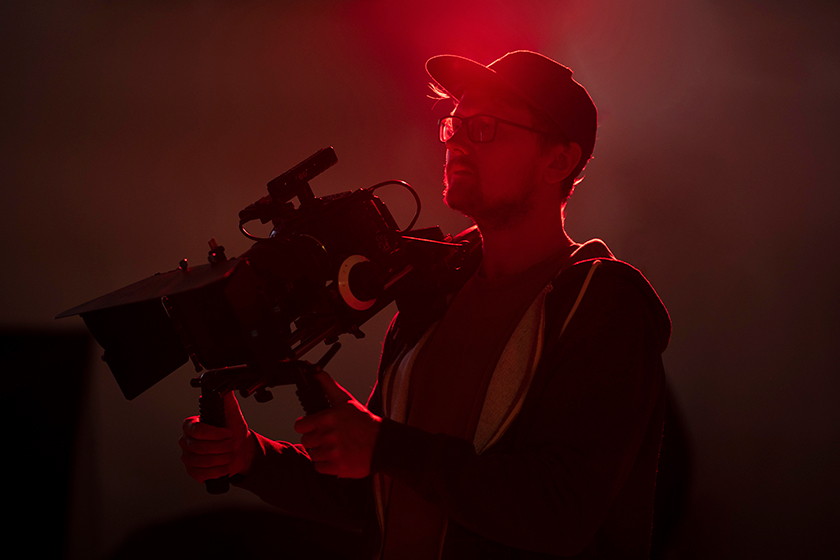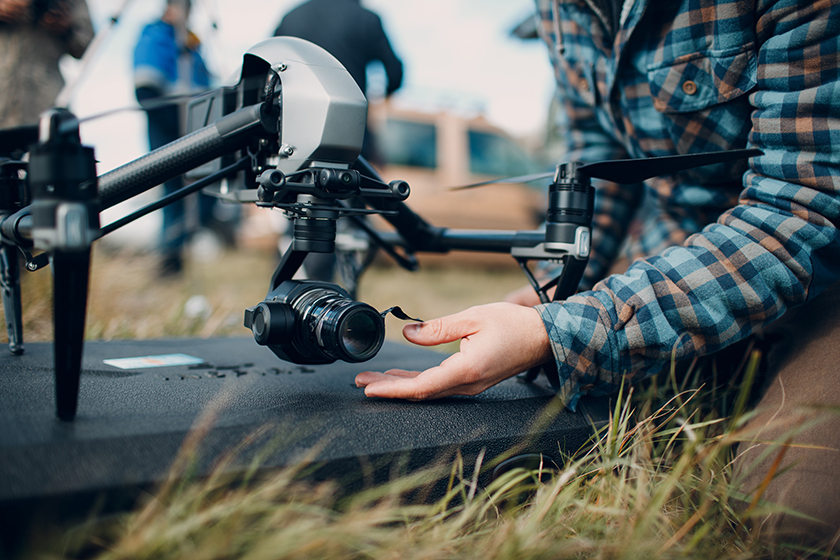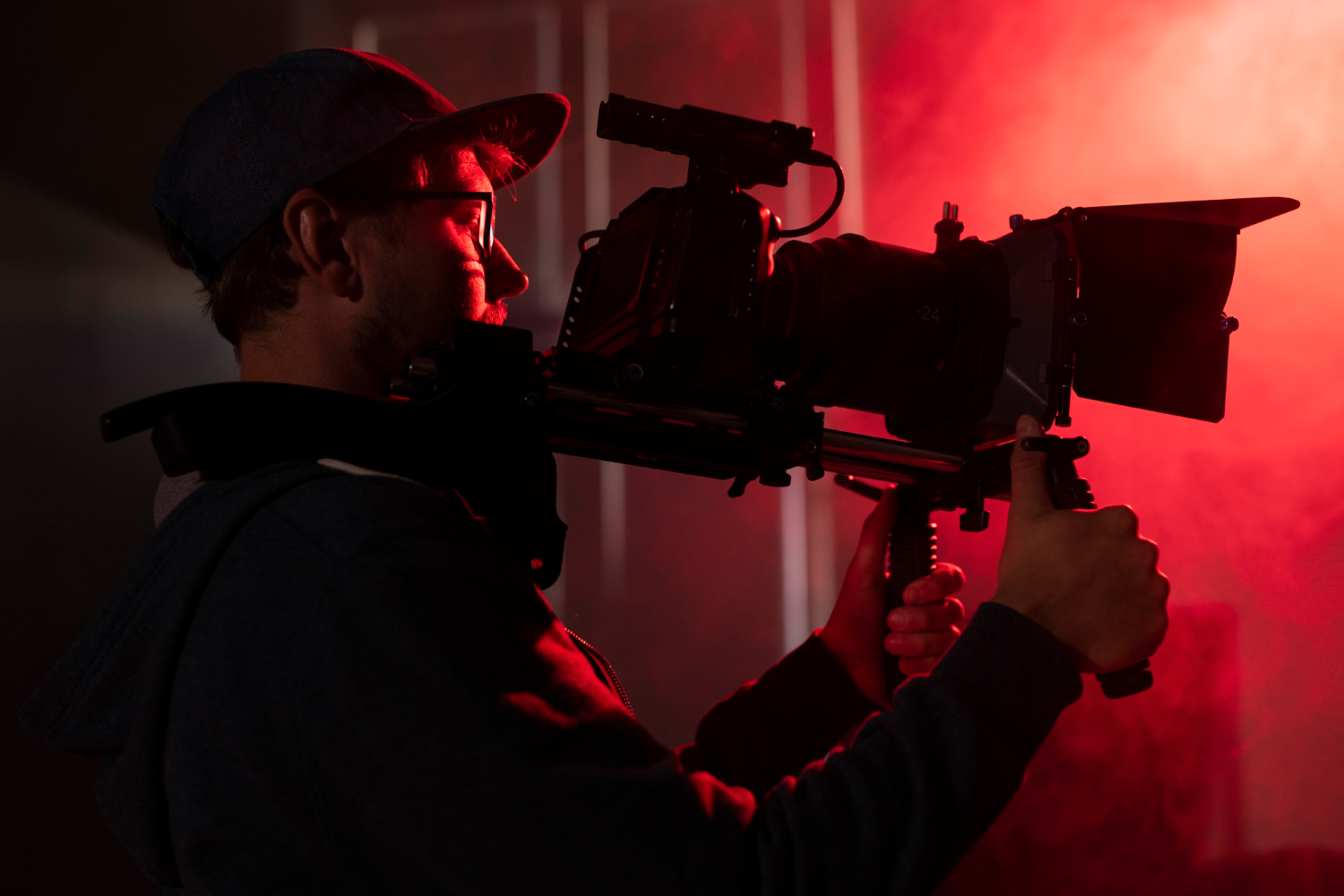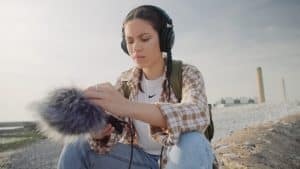Most of the audience doesn’t think about camera movement when watching a film, but as filmmakers, we understand there’s a lot of behind-the-scenes pre-production and production work that happens to make a shot iconic. A well-planned and well-constructed camera move will elevate a film’s aesthetic, convey emotion, and advance the narrative. So it’s important to observe and plan for the small, subtle pans, tilts, and tracking shots as they compound with the performance to help bring emotion to the storyline.

To help grasp the art form of camera movement, you need a good understanding of the type of shots available and where to use them. It’s important to remember the choice of camera movement should be determined by the story and the impact that the filmmaker wishes to create on the audience rather than justifying a budget requirement.
Camera Movement Types: Understanding the Differences
A barrage of new equipment constantly coming on the market significantly changes the way a shot is filmed. However, technology aside, camera movements can break down into six different moves, including the following:
Panning shots: in panning, the camera moves left or right horizontally to reveal a changing environment or follow a subject.
Tilting shots: when the camera is tilted vertically, either up or down, the audience’s attention is shifted around the frame.
Dolly shots: there are multiple uses for this type of movement, including creating a sense of intimacy or conveying distance.

Tracking shots: the purpose of tracking shots is to have the camera move parallel to the action on a dolly or Steadicam to give a fluid impression of movement when filming a moving subject.
Crane shots: crane shots are shots in which the camera moves vertically and horizontally for a panoramic view of the scene.
Zooming shots: film zooming is often used to transition between shots more quickly and easily, though it can be distracting when overused.
Enhancing Emotion and Mood with Camera Movement
Visual storytelling narratives can be deepened and enhanced by camera movement. By moving the camera in particular ways, filmmakers create a sense of movement and space that can help an audience connect with the characters and the setting. For example, when the camera moves sweepingly, a location can be enhanced, whereas if it is handheld, it can be conveyed in a way that creates intimacy with the characters.
As well as conveying an emotional tone and perspective, camera movements can also suggest tension and instability. Slow, smooth camera movements convey calm, while rapid, jerky movements imply instability. It’s all about creating the atmosphere and helping bolster the narrative. Adding stock video to your mix of visuals is a good way to enhance emotion. Many high-end clips contain smooth pans or epic zooms, which can be a bonus if you don’t have an equipment budget to recreate the shot.
Moving a Camera Effectively
Filmmakers should always uphold the importance of camera movement. For instance, to create a sense of natural motion and increase immersion, an operator matches the camera’s movement with the character’s. In addition, filmmakers can use zoom and focus techniques to highlight particular elements within a shot and dolly and crane shots to create fluidity and depth. Creatives can enhance the visual storytelling of their films by combining these and other techniques to create dynamic, compelling camera movements.

Common Mistakes to Avoid When Using Camera Movement
Camera movement is an indispensable tool for visual storytelling, but filmmakers must be aware of typical errors that impede its effectiveness. Excessive use of camera movement can generate confusion and disrupt the narrative flow. Therefore, the intentional and discerning utilization of camera movement is imperative to enhance its meaning and effectiveness. For instance, a close-up of an actor’s face captured by a handheld camera can establish an intimate connection between the viewer and the character. In contrast, a slow tracking shot can create an aura of suspense or intrigue.
Another common mistake to avoid is employing camera movement as a remedial measure for poor shot composition or editing. While camera movement can augment a film’s visual storytelling, it is crucial to ensure that the fundamental elements of the shot, such as framing, lighting, and focus, are competently executed. Otherwise, camera movement may call attention to the inadequacies of the shot, diminishing its overall impact.
The Influence of Camera Movement on Film Style and Aesthetics
An assortment of camera movements and techniques can produce diverse visual effects, ranging from evoking a feeling of suspense and thrill to imbuing a sense of serenity and peace. For instance, a tracking shot can create a sense of unease in a horror film, while a slow-motion shot can intensify an action scene.
Camera movement can also impact a film’s overall look and ambience, determining its pace, cadence, and temperament. Through the astute selection of camera movements and techniques that align with the film’s visual style and narrative, filmmakers can heighten their cinematic creations’ emotional resonance and visual allure.
The Prospects of Camera Movement in Visual Storytelling
With the advent of new tools and techniques as technology progresses, the future of camera movement in visual storytelling is anticipated to adapt. Virtual and augmented reality, for instance, provide new prospects for immersive camera movements that can instill a sense of participation in the narrative. Furthermore, progressions in CGI and Performance Capture technology (Motion Capture) may enable more intricate and lifelike camera movements that can confer greater intricacy and realism to the storytelling. Avatar: The Way of Water is a good example of a film utilizing this technology.

On the other side of the screen, the growing prominence of streaming platforms and shorter-form content may impel filmmakers to explore new, inventive camera movements and techniques that seize and maintain viewers’ interest in an ever-more-congested digital sphere. Nonetheless, filmmakers need to remain tethered to storytelling principles, ensuring that camera movement always serves the narrative. So, as you go through the filmmaking process, pay close attention to the visual impact your pictures will have. Plan each shot with great emphasis on the type of camera move you’ll have in each scene. Use a solid storyboard approach, and even consider using stock video as placeholders to help portray your vision to the rest of the team.
Images via Freepik.
Looking for filmmaking tips and tricks? Check out our YouTube channel for tutorials like this . . .
Looking for more tips and tricks? Check out these articles . . .




